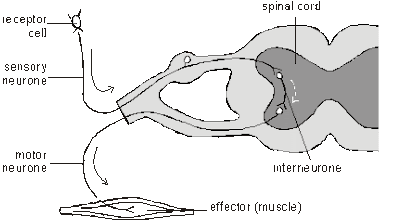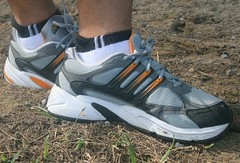REFLEX ACTION
A reflex action is a coordinated response to a specific stimulus.
The following figure shows a reflex arc:
A reflex action is a coordinated response to a specific stimulus.
The following figure shows a reflex arc:

The sequence of events in a reflex action (Example: touching hot object):
- The sensory receptor in the skin first received a stimulus (hot object).
- This caused an electrical impulse to be generated which is then transmitted by the sensory neurones towards the spinal cord.
- In the spinal cord, at the synapse between the sensory neurones and the relay neurones (at the nerve endings of the sensory neurones) a chemical called acetylcholine, is released which stimulates the relay neurones to produce an electrical impulse (nerve impulse). The nerve impulse is then transmitted along the relay neurones towards the motor neurones.
- At the synapse between the relay neurones and the motor neurones (at the nerve endings of the relay neurones) acetylcholine is again released which stimulates the motor neurones to produce an electrical impulse.
- This electrical impulse is then transmitted along the motor neurones towards the effectors (in this case the effectors are the biceps and triceps of the arm).
- A response is then produced as the biceps contracts and the triceps relaxes. This antagonistic action of the biceps and triceps helps to lift the hand away from the hot object.
